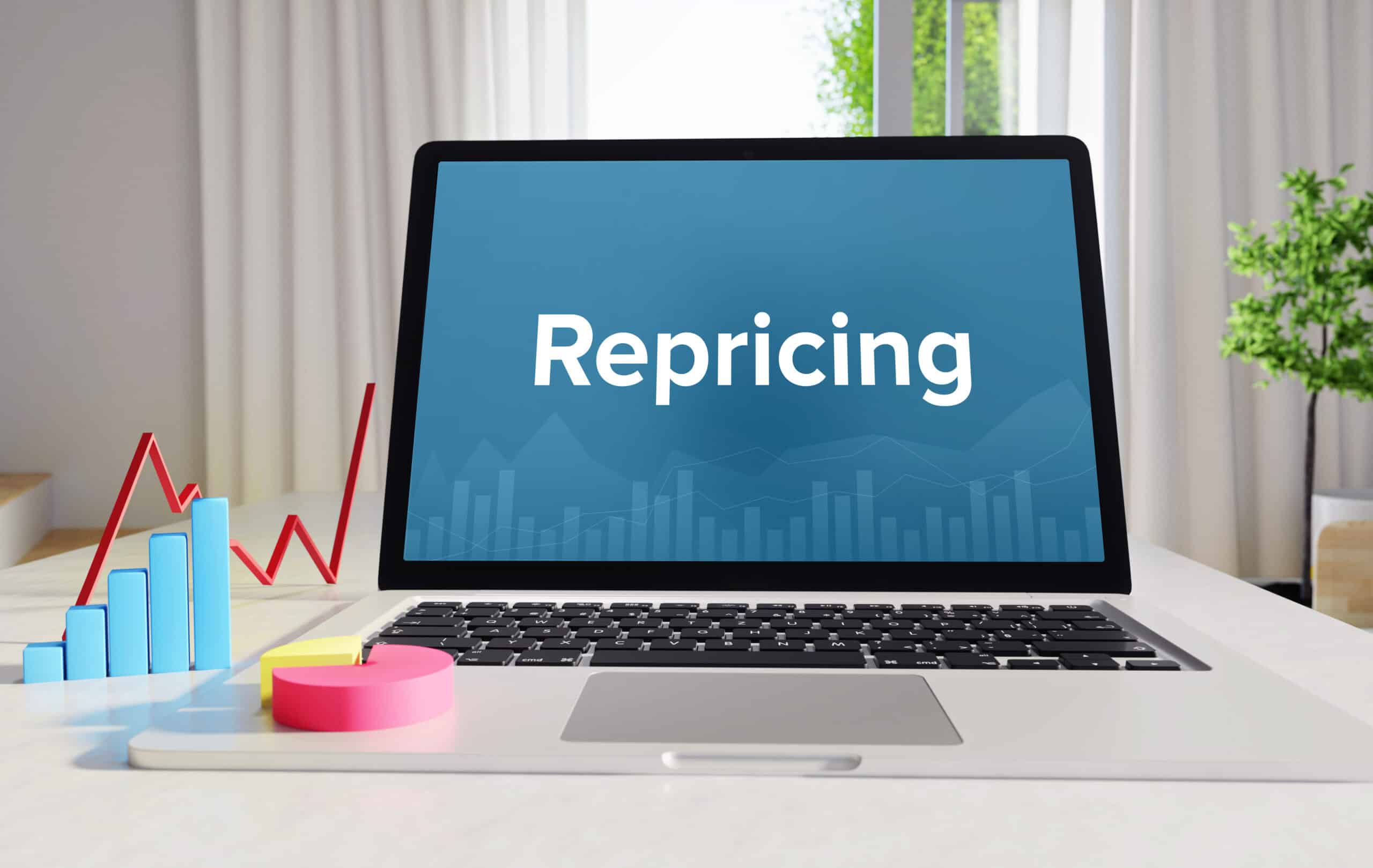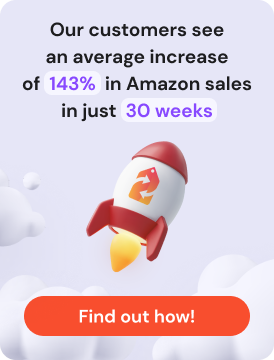Selecting the right repricing tool isn’t just another software decision—it’s a strategic investment that directly impacts your margins, competitiveness, and time management. Yet many sellers find themselves either overpaying for features they’ll never use or stuck with basic tools that can’t keep up with their growth.
The repricing software market has exploded in recent years, with dozens of platforms promising to automate your pricing and win the Buy Box. But here’s the reality: not all repricers are built the same. Some excel at speed but lack profitability controls. Others offer impressive dashboards while their core repricing logic falls short.
This guide cuts through the marketing noise to help you identify the features that truly matter for your business. Whether you’re selling private label products on Amazon, managing wholesale inventory across multiple marketplaces, or running high-volume arbitrage operations, you’ll learn exactly which capabilities align with your selling strategy and which are just expensive distractions. If you’re new to automated pricing, start with our repricing basics guide to understand the fundamentals.
Understanding Repricing Logic: The Foundation of Every Tool
Before diving into feature lists, you need to understand the engine under the hood. Repricing logic determines how your tool makes pricing decisions, and this foundational difference separates basic automation from intelligent optimization.
Rule-Based Repricing
Rule-based systems operate on simple if/then commands you set manually. For example: „If a competitor prices $2 below me, match them minus $0.50“ or „Never go below $15.99.“ These systems are predictable and give you complete control over every pricing scenario.
The advantage is transparency—you know exactly why your price changed. The limitation is rigidity. Markets shift, competitor behaviors evolve, and seasonal demand fluctuates. Rule-based systems can’t adapt without constant manual adjustments from you.
AI and Algorithmic Repricing
Algorithmic repricers use machine learning and historical data to make dynamic pricing decisions. These systems analyze patterns like competitor behavior, sales velocity, time of day, and seasonal trends to optimize prices automatically. Instead of following rigid rules, they learn what wins the Buy Box at the best possible margin.
Tools like Repricer.com use sophisticated algorithms that balance competitiveness with profitability, adjusting strategies based on real-time market conditions. The trade-off is less granular control in exchange for automated optimization that works around the clock. Learn more about different repricing strategies and how they impact your bottom line.
Hybrid Models
The most sophisticated platforms combine both approaches. You set strategic guardrails and business rules, while the AI handles tactical price adjustments within those boundaries. This gives you the safety of price floors and ceilings with the performance benefits of intelligent automation.
Comparison Table: Repricing Logic Types
| Logic Type | Control Level | Learning Curve | Performance | Best For |
| Rule-Based | Very High | Low | Moderate | Small catalogs, simple strategies |
| AI/Algorithmic | Moderate | Medium | High | Competitive markets, scaling businesses |
| Hybrid | High | Medium-High | Very High | Advanced sellers, complex catalogs |
Essential Repricer Features: What Actually Matters
Now that you understand the logic foundation, let’s examine the features that separate good repricers from mediocre ones. These aren’t nice-to-haves—they’re critical capabilities that directly impact your bottom line.
Min/Max Price Guardrails
This is non-negotiable. Every repricer should allow you to set absolute price floors and ceilings for each SKU or product group. Without these guardrails, even the smartest AI can race your prices to unprofitable levels during competitive battles or push them so high you lose all visibility.
Look for platforms that let you set these limits at multiple levels: globally across your catalog, by category, and at the individual SKU level. The best tools, like Repricer.com’s dynamic pricing solution, also let you tie these limits to your actual costs and desired margin percentages rather than just arbitrary dollar amounts.
Why it matters: Prevents margin erosion and protects your profitability during automated repricing cycles.
Must-have for: All seller types, regardless of size or strategy.
Buy Box Targeting and Tracking
The Buy Box generates the overwhelming majority of sales on Amazon—research indicates that 82% to 90% of all Amazon transactions go through the Buy Box. A repricer without sophisticated Buy Box targeting is like a car without a steering wheel.
Your tool should not only help you win the Buy Box but also track your Buy Box percentage over time, analyze why you’re losing it when competitors take over, and adjust strategy based on Buy Box patterns. Advanced platforms monitor factors beyond price, including fulfillment method, seller rating, and inventory levels. For a deeper dive into Buy Box mechanics, check out our complete Amazon Buy Box guide.
Why it matters: Buy Box ownership drives revenue velocity and inventory turnover.
Must-have for: FBA sellers, private label brands, and resellers focused on competitive products.
Inventory-Aware Repricing
Smart repricers adjust pricing strategy based on your stock levels. When inventory is low, you might want to increase prices to slow sales velocity and prevent stockouts. When you’re overstocked, aggressive pricing helps move units faster and free up capital.
This feature becomes critical as your catalog grows. Managing this manually across dozens or hundreds of SKUs is impossible. Look for tools that let you set different repricing strategies triggered by inventory thresholds. According to McKinsey research, dynamic inventory-based pricing can improve margins by 2-5% while reducing stockout incidents.
Why it matters: Prevents stockouts, optimizes cash flow, and reduces storage fees.
Must-have for: Sellers with high SKU counts and variable inventory levels.
Multichannel Sync
If you sell on Amazon, Walmart, eBay, or other marketplaces simultaneously, keeping prices aligned across platforms is essential for maintaining brand consistency and preventing channel conflict. Multichannel repricing ensures you’re not undercutting yourself on one marketplace while overpricing on another.
The challenge is that each platform has different fee structures, competitive dynamics, and buyer behaviors. Your repricer should account for these differences while maintaining strategic alignment. Repricer.com supports multichannel repricing with platform-specific optimization across Amazon, Walmart, and eBay.
Why it matters: Maintains brand consistency and optimizes profitability across diverse marketplace ecosystems.
Must-have for: Walmart, eBay, and multi-platform sellers.
MAP Policy Protection
Minimum Advertised Price policies are common in wholesale and brand partnerships. Violating MAP can damage relationships, trigger account suspensions, or result in loss of supplier privileges. Your repricer must respect these thresholds automatically.
Look for tools that let you tag products with MAP restrictions and create hard stops that prevent pricing below these levels under any circumstance. Some platforms also include alert systems that notify you when competitors violate MAP, which can be valuable intelligence.
Why it matters: Protects supplier relationships and prevents costly policy violations.
Must-have for: Wholesale sellers, authorized resellers, and brand owners.
Repricing Speed
How often does your tool check competitor prices and update yours? This interval matters more in some niches than others. In highly competitive categories with frequent price changes, real-time or near-real-time repricing (every 2-5 minutes) can mean the difference between winning and losing the Buy Box.
In more stable markets or for unique products, repricing every 15-30 minutes may be sufficient. However, be wary of tools that only reprice a few times per day—you’re essentially leaving money on the table during the gaps.
Why it matters: Impacts competitiveness and revenue capture in fast-moving markets.
Must-have for: Sellers in highly competitive niches with volatile pricing.
User Interface and Bulk Controls
As your catalog scales, the time you spend managing repricing increases exponentially—unless your tool offers efficient bulk operations. Look for platforms with intuitive dashboards that let you adjust settings for multiple SKUs simultaneously, create product groups with shared rules, and make strategic changes without tedious one-by-one edits. Repricer.com’s features include advanced bulk controls and intelligent grouping that scale with your business.
The interface should surface critical information quickly: which products are performing well, where you’re losing the Buy Box, which SKUs need attention. Poorly designed tools waste hours of your time every week.
Why it matters: Saves time at scale and reduces operational friction.
Must-have for: Catalogs with 50+ SKUs and growing businesses.
Features That Are Nice-to-Have (But Not Deal-Breakers)
While the previous section covered essentials, these features add convenience and insights without being critical to core repricing functionality. Consider them valuable additions rather than requirements.
Mobile App Access
A mobile app lets you monitor performance and make quick adjustments on the go. This is useful for staying informed but rarely necessary for day-to-day operations since repricing runs automatically. Most sellers check their mobile apps during commutes or when away from their desks but rely on desktop interfaces for serious work.
Visual Analytics Dashboards
Advanced reporting with charts, graphs, and trend visualizations helps you understand performance patterns over time. While helpful for strategic planning, basic reporting that shows sales, Buy Box percentage, and price changes is usually sufficient for operational needs. Repricer.com’s Insights dashboard provides actionable analytics without overwhelming complexity.
Smart Alerts and Notifications
Getting notified when specific events occur—like losing the Buy Box for extended periods, hitting inventory thresholds, or competitors making aggressive moves—adds proactive monitoring. However, too many alerts create noise, so look for customizable notification settings. Repricer.com’s Safe Mode feature provides intelligent alerts that protect your margins during unusual market conditions.
Dedicated Support and Onboarding
Some platforms include account managers, onboarding specialists, or priority support channels. These services accelerate your learning curve and help optimize your strategy but come at a premium. Evaluate whether the added cost justifies the support level based on your team’s technical expertise.
API Access
For sellers with custom integrations, existing tech stacks, or development resources, API access enables deeper customization and data flow between systems. This is primarily valuable for larger operations, agencies, or sellers with unique workflow requirements that off-the-shelf integrations don’t address.
Matching Repricer Features to Seller Types
Different business models have different needs. Here’s how to align features with your specific selling strategy.
Private Label Sellers
If you manufacture or source your own branded products, you need tools that protect brand value while maximizing profitability. Price guardrails prevent devaluation, MAP controls maintain pricing consistency if you have wholesale partners, and Buy Box tracking ensures you’re not losing visibility to unauthorized resellers.
Must-have features: Min/max guardrails, MAP policy protection, Buy Box tracking, profitability reports
Nice-to-have: Brand analytics, competitive monitoring for your branded terms
Wholesale Sellers
Wholesale operations typically involve relationships with multiple suppliers, MAP agreements, and inventory management across diverse product categories. Your repricer needs to respect these constraints while remaining competitive against other authorized resellers. Understanding multichannel selling dynamics becomes especially important when managing wholesale inventory across platforms.
Must-have features: MAP alerts and enforcement, inventory-aware repricing, multichannel sync, bulk controls
Nice-to-have: Supplier performance tracking, category-level strategy settings
Arbitrage and Resellers
High-volume resellers compete primarily on price and Buy Box share. Speed matters more than brand consistency. You need aggressive automation that reacts quickly to market changes while protecting margins.
Must-have features: Fast repricing speed, AI-powered logic, Buy Box targeting, volume-based pricing strategies
Nice-to-have: Mobile alerts, competitor tracking, profit analytics
Agencies and Multi-Client Operations
If you manage repricing for multiple clients or brands, you need organizational features that keep accounts separate, allow team collaboration, and provide client-facing reports. Dashboard views, user roles, and data export capabilities become essential.
Must-have features: Multi-account management, user permissions, white-label reporting, dashboard views
Nice-to-have: API access, custom integrations, dedicated account management
Top Repricing Tools by Feature Set
While features matter most, here’s a quick landscape of how different platforms position themselves. Remember to evaluate based on your specific needs rather than marketing promises. For a comprehensive comparison, see our detailed 2025 Amazon repricer review.
Repricer.com offers a balanced approach combining AI-powered repricing with robust profitability controls. The platform excels at helping sellers maintain margins while staying competitive, with comprehensive features for Amazon, Walmart, and eBay sellers. Particularly strong for sellers who want automation without sacrificing strategic control. With the fastest repricing speeds in the industry and advanced safety features, Repricer.com consistently outperforms alternatives in both Buy Box win rate and margin protection.
Aura (formerly Sellery) focuses heavily on private label FBA sellers with sophisticated Buy Box algorithms and repricing strategies designed to maximize Amazon performance. Strong analytics but limited multichannel support.
Seller Snap positions as the performance-focused option with AI-heavy automation. Good for sellers who want to hand over decision-making to algorithms and trust the system to optimize. Higher learning curve for new users.
BQool offers budget-friendly pricing with solid core features, making it popular with smaller sellers and those just starting with automation. Less sophisticated logic but covers the basics well.
Informed.co targets multichannel power users with strong Walmart and eBay support alongside Amazon. Good for larger operations managing diverse marketplace presence.
Amazon Automate Pricing is Amazon’s native basic tool—free but extremely limited compared to third-party solutions. Only suitable for very small catalogs with simple needs. According to Statista’s ecommerce platform data, sellers using advanced repricing tools see 15-30% higher revenue compared to those using basic native solutions.
Your Repricer Selection Checklist
Use these questions to guide your evaluation process:
Catalog and Scale
- How many SKUs do you currently manage? Do you expect significant growth?
- What’s your average order value and margin percentage?
- Are your products unique or highly competitive?
Marketplace Strategy
- Do you sell on one marketplace or multiple platforms?
- Is Amazon your primary channel or part of a diversified strategy?
- Do you use FBA, FBM, or both?
Business Priorities
- Is Buy Box percentage more important than profit per unit?
- Do you have MAP agreements or pricing restrictions to honor?
- How much time can you dedicate to repricing management weekly?
Technical Requirements
- Do you need AI optimization or prefer manual control?
- How important is real-time repricing versus periodic updates?
- Do you require integrations with existing tools or ERPs?
Budget Considerations
- What’s your monthly repricing budget?
- Are you paying per SKU or flat subscription?
- Does the pricing model scale with your growth?
Download our Repricer Feature Priority Worksheet to score features based on your business needs and compare platforms systematically.
Making Your Final Decision
Choosing the right repricing tool comes down to honest assessment of your business model, growth trajectory, and operational priorities. Start by identifying your seller type and the essential features that match it. Then evaluate 3-4 platforms that excel in those areas.
Most reputable tools offer free trials—use them. Set up a small portion of your catalog and monitor performance for at least two weeks. Pay attention not just to results but also to how much time you spend managing the tool. The best repricer is one that runs efficiently in the background while you focus on sourcing, marketing, and growing your business.
Remember that repricing is not a set-it-and-forget-it solution. Even the most advanced AI requires strategic oversight, regular performance reviews, and adjustments as your business evolves. Choose a platform that grows with you and aligns with your long-term marketplace strategy.
Ready to see how Repricer.com stacks up? Start your free trial and experience intelligent repricing that balances competitiveness with profitability.
FAQs
What’s the most important feature in a repricer?
Min/max price guardrails are the most critical feature because they protect your profitability regardless of what else the tool does. Even sophisticated AI can make mistakes or respond to unusual market conditions in ways that erode margins. Price floors ensure you never sell at a loss, while ceilings prevent pricing yourself out of the market. Every other feature builds on this foundation.
Are AI repricers better than rule-based systems?
AI repricers generally outperform rule-based systems in competitive markets with frequent price changes because they adapt automatically to shifting conditions. However, they’re not universally better—rule-based systems give you more control and predictability, which some sellers prefer. The best approach is often hybrid: AI optimization within strategic boundaries you define.
Can I set pricing floors and ceilings with any tool?
Most modern repricers offer min/max price controls, but implementation varies significantly. Basic tools only let you set dollar amounts per SKU. Better platforms allow percentage-based margins, cost-plus calculations, and category-level defaults. Always verify during trial periods that guardrails are enforced reliably—some tools have bugs or delays that can cause temporary violations.
What if I sell on multiple platforms?
Look for repricers that explicitly support multichannel operations with platform-specific optimization. Each marketplace has different fee structures, competitive dynamics, and buyer behaviors. Generic repricing across channels often underperforms compared to tools that optimize individually while maintaining strategic alignment. Repricer.com supports Amazon, Walmart, and eBay with marketplace-specific strategies. Learn more about optimizing Walmart pricing and eBay repricing strategies.
How much should I budget for repricing software?
Repricing tools typically cost between $50 and $500+ monthly depending on catalog size and feature set. Most use tiered pricing based on SKU count or sales volume. Budget $100-200 monthly for mid-sized catalogs (100-500 SKUs). Calculate ROI based on expected margin improvement and time savings—good repricers pay for themselves quickly through better Buy Box capture and reduced manual work.
Do I need real-time repricing or is hourly sufficient?
This depends on your product category’s competitiveness. Highly competitive generic products with many sellers benefit from real-time or near-real-time repricing (every 2-5 minutes) because Buy Box ownership changes rapidly. Unique products, private label items, or stable categories perform fine with 15-30 minute intervals. Test your specific situation during trial periods to find the right balance.
Can repricing software help with stockouts?
Yes, through inventory-aware repricing features. These tools adjust pricing strategy based on stock levels—raising prices to slow sales when inventory is low and lowering them to accelerate movement when overstocked. This helps prevent both stockouts (which hurt your ranking and lose sales) and excess storage fees. The feature requires integration with your inventory management system to access real-time stock data.
Should I manually reprice or use automation?
Automation is almost always superior once your catalog exceeds 20-30 SKUs because manual repricing is time-intensive, prone to errors, and impossible to maintain 24/7. Even with small catalogs, automation frees you to focus on higher-value activities like sourcing and marketing. The only scenarios where manual repricing makes sense are very small catalogs with stable prices or unique products where you’re the only seller.





